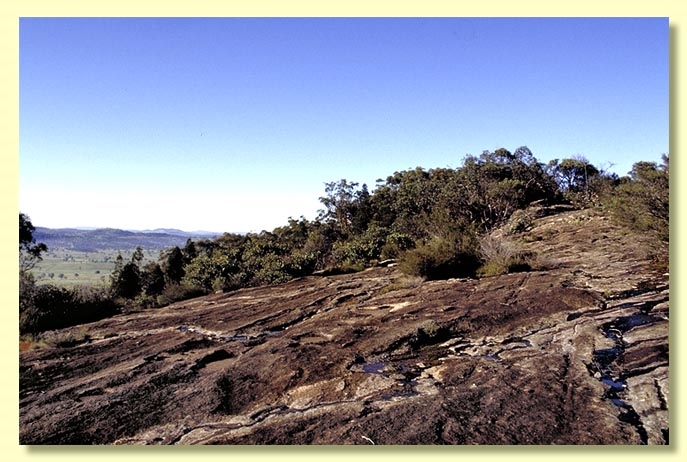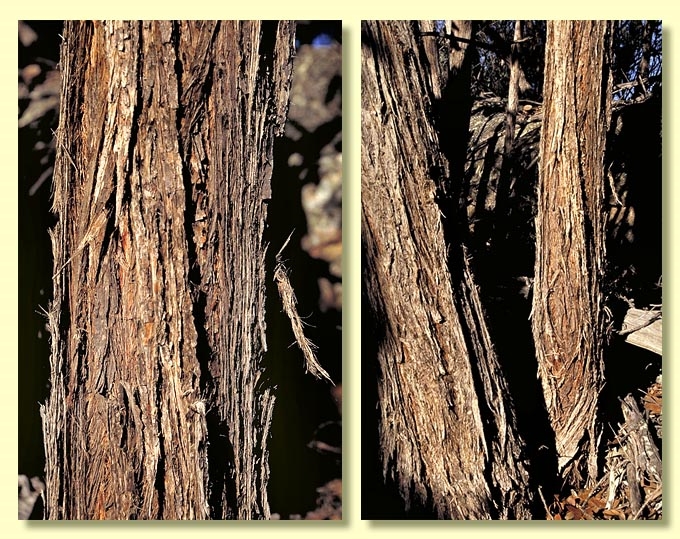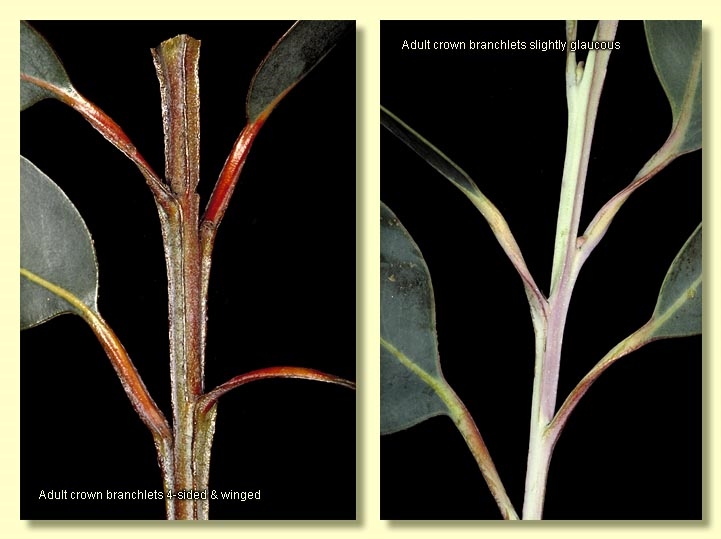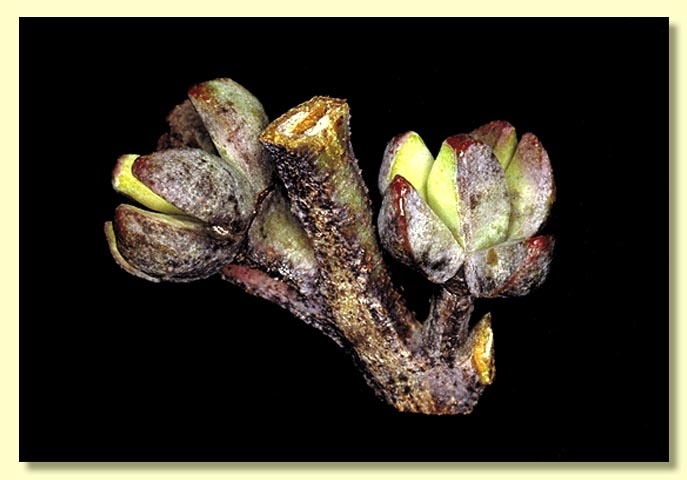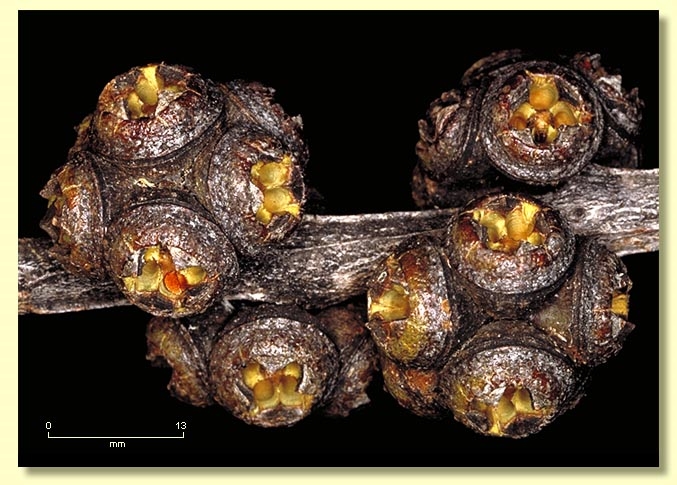Euclid - Online edition
Eucalyptus boliviana
Eucalyptus | Eucalyptus | Capillulus | Pachyphloius
Shrub or mallee to 5 m, occasionally a tree to 12 m tall. Forming a lignotuber.
Bark rough throughout, stringy, grey to grey-brown. Branchlets slightly glaucous and strongly quadrangular, forming wings at each edge.
Juvenile growth (coppice or field seedlings to 50 cm): stem square in cross-section and slightly glaucous on the newer growth, scabrid to about node 4; juvenile leaves petiolate, opposite for the first few nodes then alternate, elliptical to ovate to broadly lanceolate, 6.5–11 cm long, 3–6.5 cm wide, base round to oblique or tapering to petiole, apex apiculate, dull grey-green to slightly glaucous, thick, glabrous, except for the first few leaves, which can have a few scattered hairs on the midrib and margins.
Adult leaves alternate, petiole 1.5–3 cm long; blade broadly lanceolate, 8–16 cm long, (2.5) 3–5 cm wide, base oblique to rounded to tapering to the petiole, concolorous, younger leaves dull blue-green to slightly glaucous, ageing to glossy green, side-veins at an acute or sometimes wider angle to midrib, sparsely reticulate, intramarginal vein parallel to and well removed from margin, oil glands island.
Inflorescence axillary unbranched, peduncles 0.4–1 cm long, buds 7 per umbel, sessile. Mature buds ovoid to broadly fusiform, slightly glaucous, with longitudinal ridges, scar absent, operculum conical, stamens irregularly flexed, anthers reniform to cordate, versatile, dorsifixed, dehiscing by confluent slits, style long, stigma tapered, locules 3 or 4, the placentae each with 2 vertical ovule rows. Flowers yellow.
Fruit sessile, hemispherical to broadly funnel-shaped, 0.5–0.6 cm long, 1–1.5 cm wide, disc raised, convex to oblique, valves 3 or 4, near rim level to slightly exserted.
Seeds brown, (1.5)2–2.2 mm long, pyramidal or obliquely pyramidal, dorsal surface smooth, hilum terminal.
Cultivated seedlings (measured at ca node 10): cotyledons reniform; stem round in cross-section, stellate-hairy for at least six nodes, above this glabrous and slightly glaucous; leaves opposite, shortly petiolate, green and discolorous for ca 4 to 6 nodes, then becoming alternate, ovate, 7–12 cm long, 4.5–6.5 cm wide, base rounded to tapering, margin entire or irregular due to hairs, apex pointed, lamina more or less glabrous after alternation and concolorous, blue-green to slightly glaucous.
Flowering time unknown.
A large shrub or mallee, occasionally a medium-sized tree, known only from ca 20 plants on high cold exposed areas in the Bolivia Hill Nature Reserve, north of Deepwater on the Northern Tablelands of New South Wales. Eucalyptus boliviana has stringy bark to the small branches with the branchlets being strongly quadrangular, winged and glaucous, features unusual for a stringybark species. The leaves are large and the buds angular. Fruit are sessile with a broad ascending disc and ± exserted valves.
Eucalyptus boliviana is highly distinctive and should be confused with no other eucalypt. It is closely related to another large-leaved Northern Tablelands stringybark tree, E. williamsiana, but differs from that species in the habit, branchlet and fruit features mentioned above.
Eucalyptus boliviana was described after the publication of Brooker (2000) and thus is not included in his classification of the eucalypts.
MORE ABOUT STRINGYBARKS


